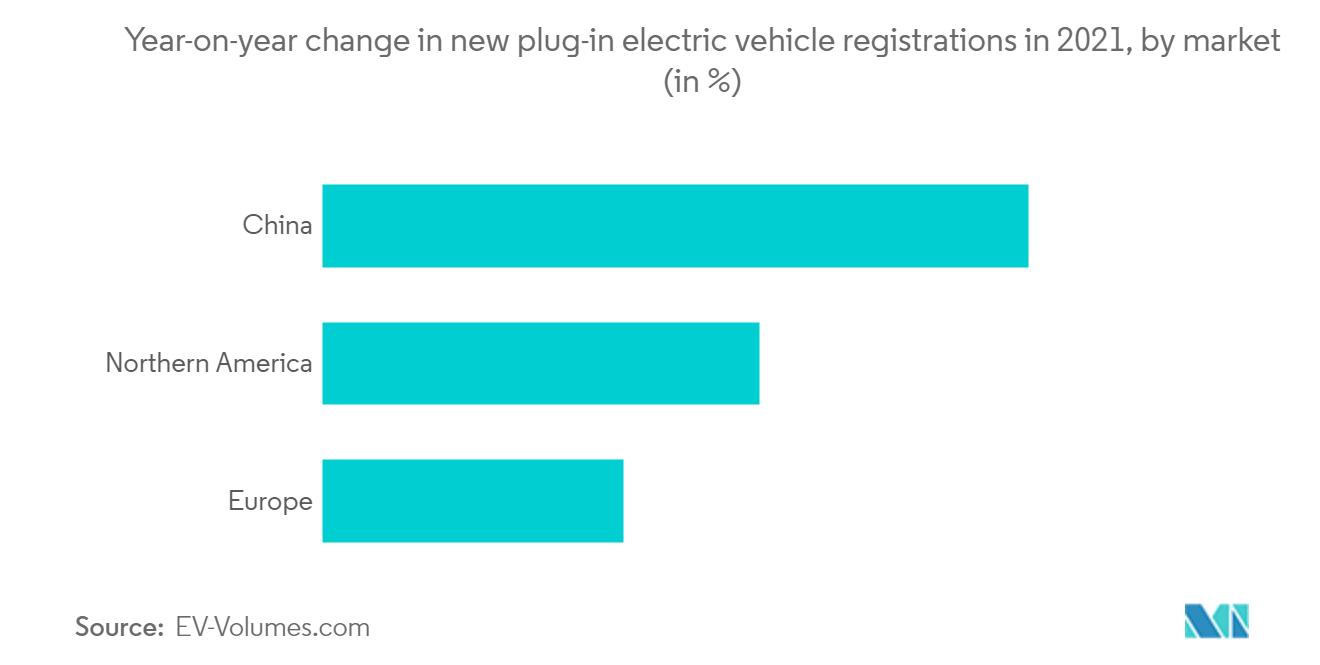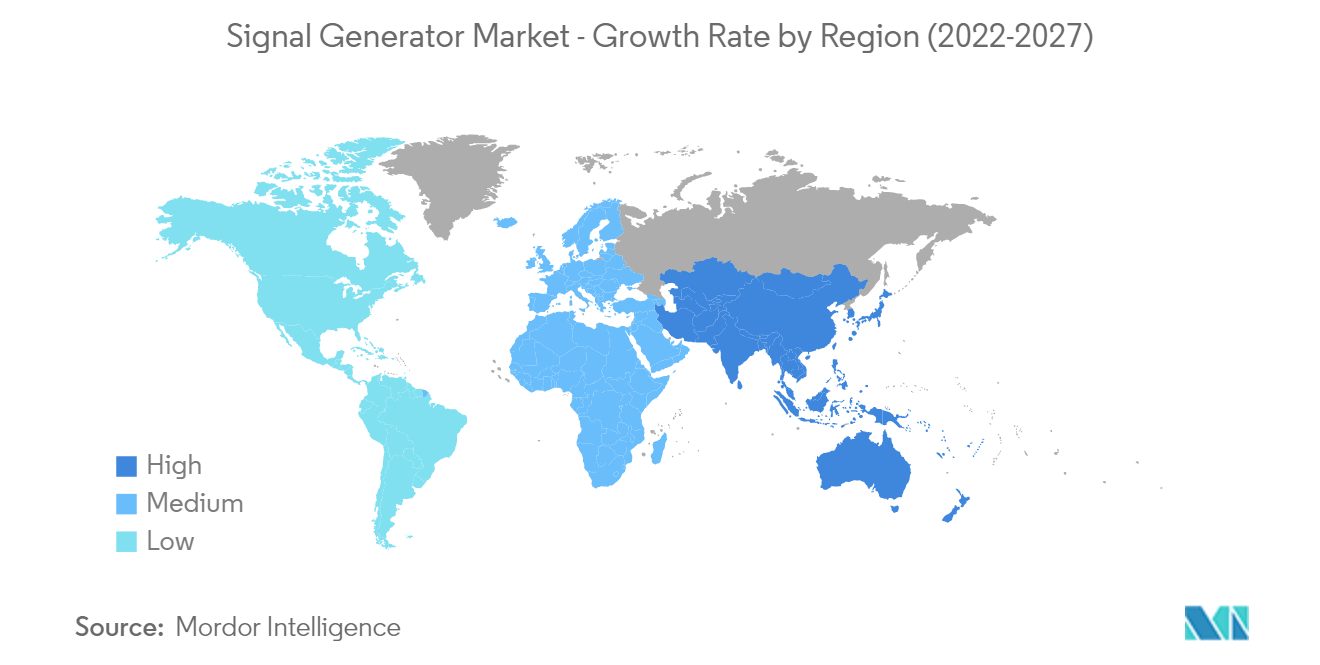Market Trends of Signal Generator Industry
This section covers the major market trends shaping the Signal Generator Market according to our research experts:
Automotive Expected to Hold Significant Share
- The automotive industry is one of the driving forces for the market studied. The growing adoption of electric cars in emerging countries may support market growth over the forecast period. Due to the increased use of electronic components and sensors in vehicles, signal generators have become necessary for testing and troubleshooting sensors, solenoids, actuators, primary and secondary ignitions, and communication data streams. In the Automotive industry, signal generators are generally used to test in-car entertainment and driver assisting aids such as reverse parking sensors and remote keys.
- In recent years, the demand for signal generators has increased due to testing requirements in the R&D of autonomous vehicle technologies and hybrid power-train systems. Global automakers increasingly use signal generators to ensure the safety, quality, and reliability of radars and sensors used in autonomous vehicle technologies. Signal generators test the communication link between critical devices such as radars, sensors, and the central computing unit. Advances in electrical and electronic vehicle technology, which occurred over recent years, made signal generators in testing, troubleshooting, and diagnosis almost mandatory.
- The European Union has also deployed a new regulation, the emergency call (eCall) system, which offers fast assistance in the event of a car accident. Due to the above factor, all new vehicles sold in the European market after the first quarter of 2018 are necessitated to have an In-Vehicle System (IVS) supporting eCall. These systems are required to be appropriately tested before being sold. It is necessary to stimulate the IVS with standard conform GNSS signals in a laboratory to ensure repetitive and standard testing, where a signal generator plays a prominent role.
- Also, to the new eCall regulations, there is a new standard to safeguard GNSS-based devices from the consequences of adjacent band interference. This standard was deployed by the European Telecommunications Standards Institute (ETSI). The standard ensures that any new or altered GNSS product launched in the European Union can withstand adjacent band interference and continue operating without interruption. These systems also need to be tested, generating demand for signal generators.
- The development of autonomous cars has increased the demand for sensors and radar-based systems deployed for safe operation. These sensors and radars are based on an ultrasonic frequency with a spectrum range of around 40 kHz. With the increasing deployment of the in-car entertainment systems and growing investments in R&D, new automotive systems generate the demand for signal generators with frequencies of 50-100 MHz.

Asia-Pacific Expected to Witness Significant Growth
- The Asia-Pacific region is expected to witness significant growth in the signal generator market. The increase is due to the surging demand for signal generators, especially in nations, like China, India, and South Korea. The growing LTE adoption in Asia-Pacific is also driving the market's growth. Ericsson estimated that Asia-Pacific would account for approximately 3 billion LTE subscriptions in 2020, increasing from 300 million LTE subscriptions in 2019. There is a rising demand for signal generators among automotive and electronics manufacturers, helping the market grow across the region.
- In October 2021, China Mobile selected the R&S SMM100A vector signal generator from Rohde & Schwarz to validate its 5G technology. The new signal source generates 5G signals in research applications to verify current and future 5G technologies. The project continues the long-term cooperation between China Mobile and Rohde & Schwarz China. Also, China Mobile has equipped its research lab with the R&S SMM100A vector signal generator for 5G test projects.
- In January 2021, Rohde & Schwarz introduced the R&S SMM100A, the only vector signal generator with mmWave testing capabilities in its class. The instrument meets the rigorous expectations for generating digital signals for the most advanced wireless communication devices entering production and developing future products and technologies. The new R&S SMM100A vector signal generator meets this need, displaying excellent RF characteristics across the entire frequency range from 100 MHz to 44 GHz. It covers all the bands used by any wireless standards, including LTE and 5G NR, and the latest WLAN standards, Wi-Fi 6, and Wi-Fi 6E (up to 7.125 GHz).
- In January 2022, Anritsu Corporation announced the launch of its new Interference Waveform Pattern for 5G NR Receiver Test MX371055A and Interference Waveform Pattern for LTE Receiver Test MX371054A software in Australia. These tools generate 3GPP interference waveform patterns for testing the receiver sensitivity and throughput of 5G and LTE user equipment (UE) and modules using the Signal Generator MG3710E. Installing these tools in the MG3710E combined with the Radio Communication Test Station MT8000A and Radio Communication Analyzer MT8821C facilitates easy interference evaluation tests required by the 3GPP RF Compliance Test.


